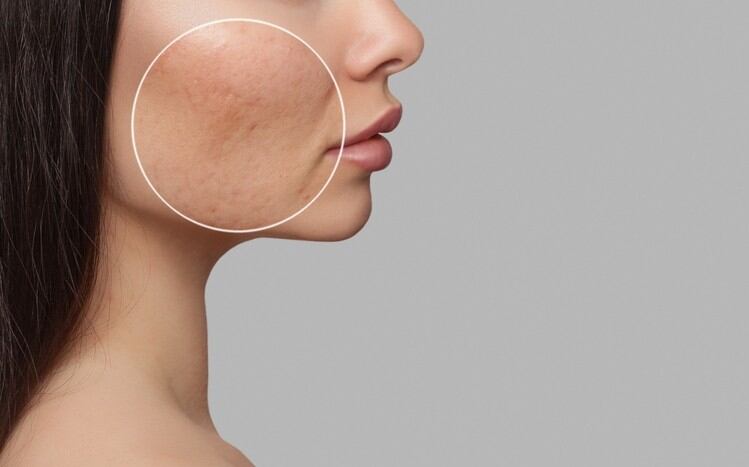As detailed in research made available by the Gluten Intolerance Group, “celiac disease is a chronic, autoimmune disease which is the result of an immune system response to the ingestion of gluten (a protein found in wheat, rye, and barley) in susceptible individuals,” and to date, the disease “affects about 1 in 100 individuals worldwide, or over 3 million people in the United States alone.” Those suffering from celiac disease can experience damage to the small intestine, resulting in malabsorption of nutrients from food and other related health issues.
In addition to those diagnosed with active celiac disease, “research suggests that about 6% of the U.S. population is gluten intolerant, which is more common than celiac disease, which affects about 1% of the population.” Although cosmetic products are not intended to be consumed and digested, many of those who experience gluten-intolerance or celiac disease and seek to only use gluten-free products to avoid potential allergies or unwanted reactions.
To learn more about the importance of gluten-free ingredient options for cosmetic product formulations, best practices for gluten-free product manufacturing, and the growing demand for gluten-free products, including cosmetics, CosmeticsDesign spoke to Jeanne Reid, Marketing Manager for the Gluten Intolerance Group. Reid is a marketing and advertising professional with 25 years in the retail, restaurant and CPG industries, as well as cause-related efforts.
CDU: Can you share some brief background about yourself, your organization, and your expertise in this area?
Jeanne Reid (JR): The Gluten Intolerance Group (GIG) is a nonprofit organization getting ready to celebrate our 50th year of empowering the gluten-free community. We’re on a mission to make life easier for everyone living gluten-free, including through our Gluten-Free Certification Organization (GFCO), where we currently certify over 60,000 products as gluten-free. These products have undergone rigorous processes and testing to ensure they’re truly safe for our community. GFCO has certified gluten-free cosmetic products for over 10 years.
In terms of my personal background, I am a gluten-free consumer who wears cosmetics and prefers gluten-free cosmetics. I also have a child with celiac disease, and I care about what they put on their skin.
As the Marketing Manager for GIG, I’m passionate about making sure all the people we work with in the gluten-free community are well-served—including people who choose gluten-free cosmetics simply because they don’t want gluten in their lives, and not necessarily because they’d have a reaction to gluten-containing cosmetics. No matter their reasons for shopping and living gluten-free, we want to support them in those efforts.
CDU: What is the importance of gluten-free manufacturing practices as applied to cosmetic and personal beauty care products for consumers? For manufacturers?
JR: We often hear from members of the gluten-free community who will describe having a reaction to gluten-containing cosmetics, including things like swelling, redness, or itchiness. There’s currently not a lot of research about why this is true for some people and not others, though it might be because of a wheat allergy or an allergy to one of the gluten-containing grains. But we frequently hear from consumers who describe having these reactions and/or avoid gluten-containing cosmetics for their own well-being.
One of the challenges is that ingredients in cosmetics tend to have extremely complex names, which can make it difficult for consumers to determine whether they contain gluten. The FDA doesn’t have gluten-free labeling requirements for cosmetics, so often the manufacturers aren’t even aware of where these products come from or what they contain.
The 2022 Modernization of Cosmetics Regulation Act will require manufacturers to report “adverse events” that result from their products, but the bar for this is pretty high, so the types of irritation that people chalk up to a gluten response aren’t likely to prompt any action by the FDA.
Choosing products that are certified as gluten-free is really the only way for gluten-free consumers to be sure cosmetic products are safe for them to use. It also lets them know that the products they’re using on their skin meet the same rigorous standards as the ones for gluten-free food, where, for example, the gluten content must be less than 10 parts per million for products certified by GFCO.
CDU: What are some of the best practices for cosmetic and personal care product manufacturers of gluten-free products?
JR: GFCO has a set of manufacturing standards and protocols for all steps in the process, from ordering raw materials to controlling your packaging on the other end. One of those processes involves reviewing your ingredients to make sure they’re not derived from a gluten grain source, which, considering the use of Latin names, can sometimes be difficult to determine.
Other best practices include making sure that wheat-containing ingredients are separated from those designated as gluten-free, both in storage and during production. If you’re sharing production equipment between gluten-containing and gluten-free products, it’s important to implement a rigorous cleaning process between uses to make sure you’re not causing cross-contact. And of course, making sure products are properly packaged and clearly labeled.
CDU: Why should the cosmetic and personal care product industries consider gluten-free product launches and collections in their inventory offerings?
JR: There’s real demand for these products within the gluten-free community, so cosmetics manufacturers have an opportunity to grow their audience and appeal to a wider array of customers. Globally, gluten-free markets have doubled over the last 10 years and are projected to double again in the next ten years.
Our research shows that 23% of U.S. shoppers are choosing gluten-free, meaning they’re specifically looking for a gluten-free claim on a product package because either they or someone in their household is avoiding gluten. I’ll add here that for manufacturers who are entering this market, paying attention to gluten-free claims is important, since gluten-free consumers won’t buy products that don’t have a clear gluten-free claim on their packaging.
But when it comes to gluten-free cosmetics, there is a market that’s underserved, and manufacturers have an opportunity to expand their consumer base in meeting the demand for these products.
CDU: What are some of the risks of gluten contamination in cosmetic and personal care products for consumers?
JR: I’ll start with a disclaimer that the medical community states that gluten is too large to be absorbed through the skin, so the risk is minimal from that perspective. But the perception and experience of the consumer is different, and there are certainly many people who report swelling, itchiness and redness after contact with gluten-containing cosmetics. Studies also show that these reactions do exist, even though it’s not completely clear why or how they’re happening.
That said, many consumers choose to eliminate gluten from their lives because they don’t want to take on any risk at all. They may even feed their cat gluten-free cat food, for example. With food items, there’s plenty of evidence that even slight traces of gluten can be enough to cause a reaction in a person with celiac disease or non-celiac gluten sensitivity, and there are many customers who don’t want to risk putting any gluten-containing products on or in their body for that reason.
Cosmetics aren’t meant to be ingested, but plenty are used on and around the lips, eyes, and face. And when it comes to young children with celiac disease, there’s always the concern that any product used on their skin will eventually end up in their mouth.
Gluten tends to pop up in places you wouldn’t expect it, so there are many ingredients that consumers or even manufacturers might not realize are gluten-containing. With cosmetics, there’s often the additional layer of complex ingredient names that can make it challenging to determine potential sources of gluten. But the bottom line is while it may or may not involve a medical risk, it’s a risk that many consumers are not willing to take.
CDU: What are some of the greatest challenges to implementing gluten-free manufacturing best practices for cosmetic and personal care products? What are some solutions being implemented or developed to address these issues?
JR: The biggest one is probably awareness of ingredients—where they come from, their purity and their potential to contain gluten. Another one is the difficulty of cleaning your equipment when it’s used to produce gluten-containing and gluten-free products. Also, since allergens generally aren’t being policed in cosmetics as much as they are in the food industry, it may just be something manufacturers aren’t used to thinking about.
In December of 2023, the new Modernization of Cosmetics Regulation Act will begin requiring the FDA to establish a list of “fragrance allergens,” and to determine rules for declaring those allergens on cosmetics packaging, but gluten is unlikely to be included in that list even though wheat frequently is, which goes back to the point about awareness.
As far as solutions, certification programs like GFCO lay out various protocols and best practices for manufacturers to follow when it comes to preventing cross-contact and identifying hidden sources of gluten. These programs also include education on the vocabulary and concepts associated with gluten-free manufacturing, which can go a long way in terms of heightening people’s awareness overall.
CDU: Are there any plans for further innovations for gluten-free cosmetic and personal care product production soon?
JR: So far, gluten-free products haven’t been as large a consideration in the cosmetics market, so much of the innovation will be in making manufacturers aware of the demand for gluten-free products and helping them find ways to work them into their operations and marketing. Also, underscoring the importance of the certification space and what that can accomplish in terms of bringing gluten-free consumers to your brand.
I also think there is a growing demand for transparency from the cosmetics industry in all sorts of ways, whether your product is gluten-free, cruelty free, vegan, or clean. Consumers are shifting, too, in terms of food and cosmetics, toward caring more about what’s in the products they’re purchasing.
New forms of skincare are also emerging, including products like nutricosmetics, which are ingested in capsule, powder or gummy form as a way to improve skin health. So, while increased transparency around ingredients may not be an obvious innovation, I think it’s where the industry is heading, and needs to head, based on consumer demand.
CDU: Anything else to add?
JR: I’d like to underscore that there’s a need in this area, certainly from the consumer end, since at GIG we’re often asked about cosmetics and personal care products and don’t have as many brands we can safely recommend as we’d like. I also think it’s important to reiterate that consumers are looking for certifications and for packaging that specifically labels an item as gluten-free.
They appreciate knowing that there’s a trusted third party who’s confirmed that this product is safe for them to use. Ultimately, they want to know that a brand has their needs in mind and the ability to meet those needs, especially when it’s a brand they’re loyal to.




